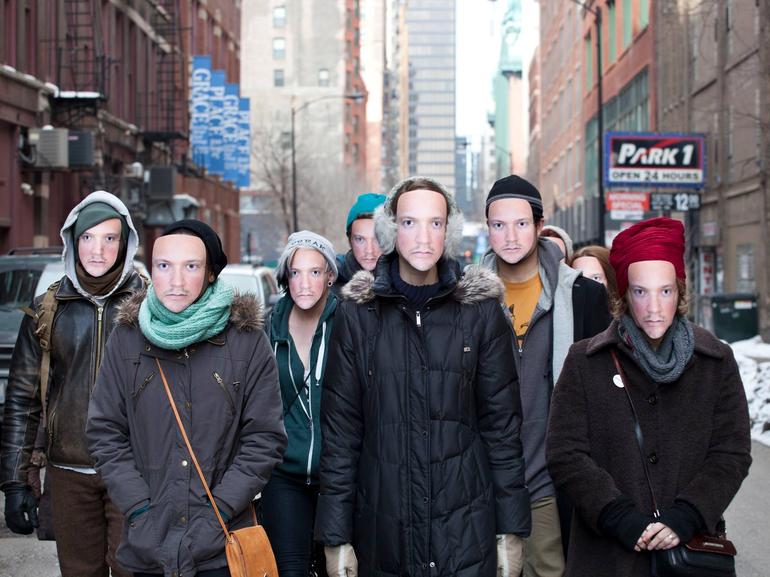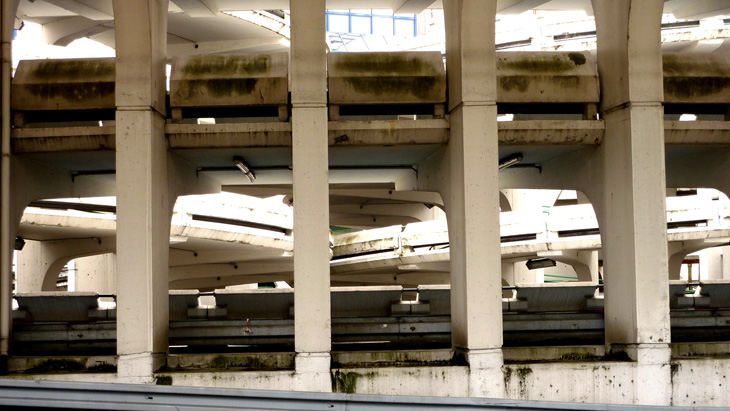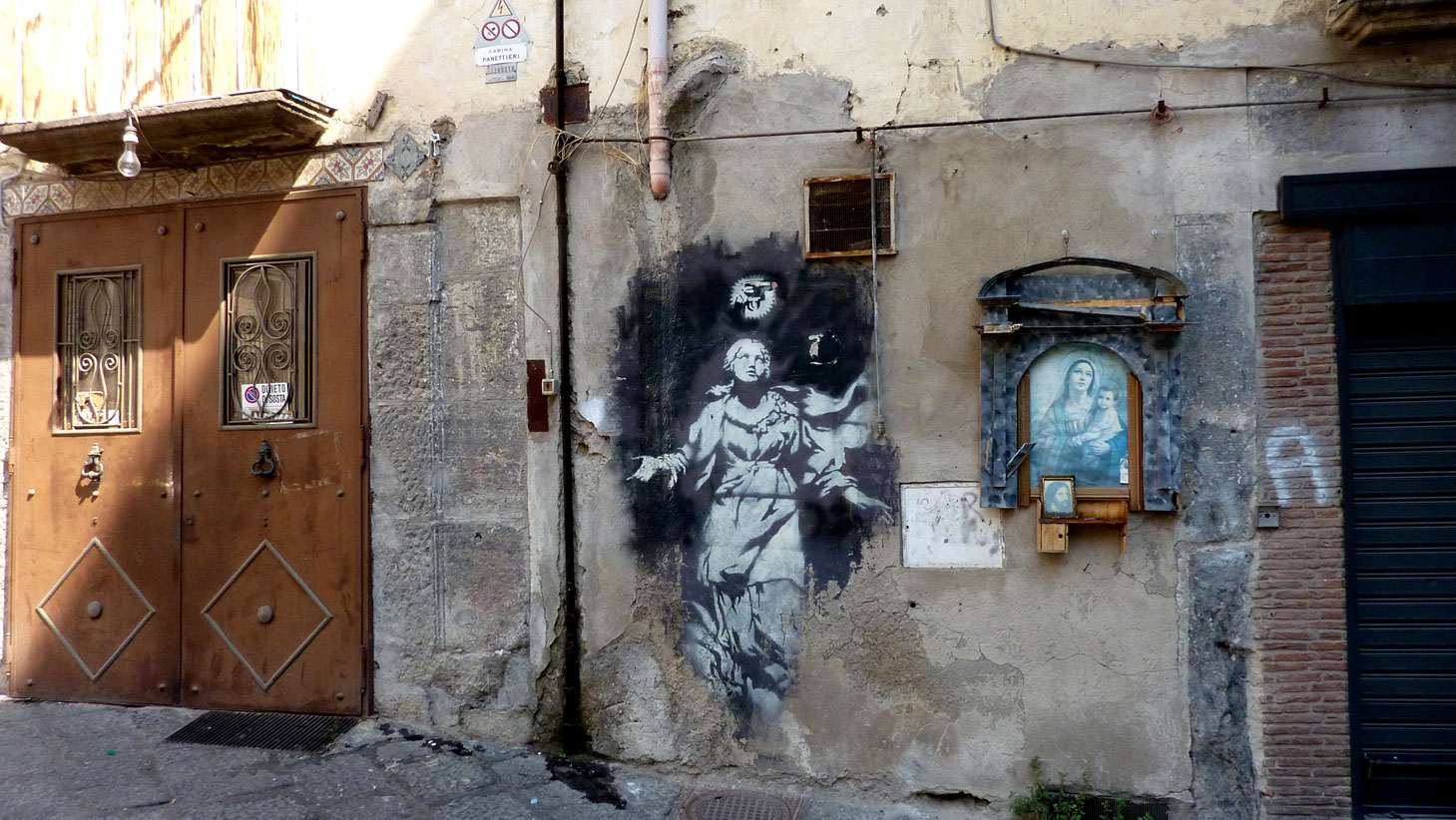
Published in membrana 1/16 – Magazine of Photography

Published in membrana 1/16 – Magazine of Photography
Twilight of the Icons, a contribution to the “On Icons” Symposium, Edited by Marco Solaroli
Available at | http://www.sociologica.mulino.it/journal/issue/index/Issue/Journal:ISSUE:26

To be held at the International Summer School on Cultural Sociology – Memory, Culture & Identity 2014 – Brno University, June 18-19
.
Presentation. What are urban interstices? What does it mean to explore the city through its folds? What sort of skills and sensibilities does the enterprise call for? This workshop is an attempt to tackle conceptually as well as ethnographically these questions. It unfolds in three moves: first, there will be a lecture where a number of urban topics and puzzles will be presented. Hopefully, an epistemic and methodological discussion will follow; second, we will do some fieldwork, albeit a necessarily crushed one. An urban walk or drift will function as invitation to ethnographic observation and data collection. At time 2, our aim is to appreciate the city as a Wunderkammer, a chambre des merveilles, or a Room of Wonders. To do so, we will disperse into the territory equipped with our probes and captors, and see what happens. Third, we will meet for a final round of discussion, collectively reviewing, discussing and interpreting collected data, in a joint effort to reflect on the experience/experiment, and look for further insights into the larger cultural meaning of the city.
.
Format
– day 1 (morning): introduction: lecture + some general methodological instructions
– day 1 (afternoon) & day 2 (morning): fieldwork, urban walk
– day 2 (afternoon): feedback: collectively reviewing, discussing and interpreting collected data

“Visibility” by Philip Smith (Yale University) – http://www.sociologica.mulino.it/journal/article/index/Article/Journal:ARTICLE:693/Item/Journal:ARTICLE:693
“Politiques de la visibilité” by Maxime Boidy (University of Strasbourg) – http://issuu.com/revuedeslivres/docs/rdl_14global?e=10620987/6575334
“La démocratie à l’heure des visibilités hiérarchisées” dans T. Fabre (Coord.) La Cité en danger ? Dictature, transparence et démocratie – Rencontres d’Averroès #19. Marseille: Editions Parenthèses.

La grande immagine e l’immaginina
as appeared in Marco Pasini e Fabio La Rocca (a cura di) Confronti visuali: una ricerca interdisciplinare. Roma: Aracne.

A speech I’m delivering at: Street Art in the Changing City: Theoretical Perspectives – Moscow, June 7–8, 2013 – http://igiti.hse.ru/en/hsestreetart/announcements/74150089.html
In a sense, both graffiti and street art share humble origins. While the first emerged as an essential expressive form of disadvantaged inner city youth in the late 1960s, the second originated from a more heterogeneous cohort of underground artists who, however, for quite a lapse since the 1970s through the 1990s, remained marginalized in the official art system. Such humble origins were clearly mirrored in the fact that, seen from the outside, early street art entertained only a parasitic relationship to the official cityscape, while graffiti was mostly stigmatized as seen as negatively affecting places (a sign of ‘urban decay’).
Over the last decade, a major counter-trend has made its appearance, whereby street art has moved much closer to the core of the contemporary art system, whereas graffiti has received unprecedented attention from mainstream cultural institutions. Albeit to different extents and not without contradictory or even paradoxical outcomes, both graffiti and street art have been increasingly associated with thrilling lifestyles, urban creativity, fashionable outfits, and hip neighborhoods. A radical transformation has followed concerning the impact these practices have on the value attributed to certain urban places. Rather than value-neutral (invisible) or value-detracting (supravisible) as before, now graffiti and even more pronouncedly street art seem to be value-bestowing (visible). Visibility means they have turned into recognizable and much sought-for items in the urban landscape.
In this context, my aim is to look at recent graffiti and street art events in the context of recent urban transformation. Although such events have popped up almost everywhere in the world, and in the Western countries in particular, I will refer to the case of Italy, where in the last five years I have been collecting a series of detailed field observations. I am puzzling about the social and cultural significance of graffiti and street art in the changing cityscape and the unfolding urban process. By doing so, I am also inquiring into the economic process of place valorization in the current transformations of capitalism. Finally, I am placing these concerns in the framework of the new political processes of disciplination and urban governance.
*
Here is the audio record (mp3 version)
Here is also a short interview I’ve released : http://www.hse.ru/en/news/85034010.html
In Adriano Cancelllieri e Giuseppe Scandurra (a cura di) Tracce Urbane. Milano, Angeli, 2012.
Due versioni:
I’ve been invited to deliver a lecture on Addictive Visibility at MAGIS – International Film Studies Spring School, Gorizia, 12-21 March 2013. More info at : http://www.filmforumfestival.it/?page_id=365
Here is my abstract:
What does visibility mean? How does it affect our life? What happens when visibility becomes addictive? These are the puzzles I would like to discuss with you. Over the last few decades, social theorists have interpreted the importance of visibility mainly in the light of the Hegelian notion of recognition. From this perspective, visibility has been regarded as a condition for the empowerment of social subjects through their reciprocal positioning on an equal standing. Since the 1970s, the struggles of various types of sexual, religious and racial minorities have certainly passed through a discourse of becoming visible in the public space and the public sphere, that is, more widely, the public domain.
However, it has also become increasingly clear that there is no possible straightforward equation between visibility and recognition. Twentieth-century mass media research has provided abundant evidence that visibility is patterned, formatted and organized into regimes which determine to a large extent the outcome of single acts of visibilizations. The Situationist critique of the spectacle consisted in denouncing a type of visibility in which supervisibilized spectacular images are severed from real life and transport viewers into a regime of experience expropriation. Both propaganda (the political, pervasive fabrication of truth, which may attain totalitarian levels) and advertisement (the capitalist economic fabrication of myths of consumption and enjoyment) can be allocated to this type of visibility. In a different domain, Foucault’s research into disciplinary rationality finely revealed the existence of a whole set of practices of control, such as the famous “inspection”, or examination, in which subjection to power is obtained through self-conscious (or reflexive) visibilization of one’s body and one’s conduct (subjection through “compulsory visibility”). By absorbing both spectacular and governmental machines, the twentieth-century state has configured itself as both a propagandist and a guardian-voyeur.
Now, new media place us before a further transformation of visibility. On the one hand, at first sight at least, in the new media age visibility-as-recognition seems to gain a new green season over visibility-as-propaganda and visibility-as-surveillance. New media are ‘interactive’ and ‘participatory’ almost by definition: a discourse of openness and empowerment, pivoting around the notions of connectivity and access, has surrounded them. But there is of course a more somber side of the coin, which is the one I am interested in exploring. Foucault had already clearly understood that discipline is participatory, since it works by transforming the subject into ‘the principle of [its] own subjection’. However, he did not think that that process could be fun or playful. On the contrary, the new forms of control, whose possibility is for the most part inscribed in the new media technologies themselves, are made possible by the fact that people engage voluntarily in them. So, why do we do so? Why is visibility so alluring? So seductive? Understanding our relation to new media visibilities and its consequences might help us clarify what is at stake in social transformation, which, at bottom, is a transformation of subjects, technologies, scales and power.

I’m joining the konfFRONTIERt Symposium organized by Fabiola Naldi and Claudio Musso in Bologna next week. It’s all about street art, graffiti, urban visibilities, and the governance of public places.
Here is the programme | http://frontier.bo.it/programma/

Organized by Giuliana Costa @ Politecnico di Milano, with
Andreas Philippopoulos-Mihalopoulos, Mattias Kärrholm, and myself. On January 31st, 2013
in Nebulosa – Zeitschrift für Sichtbarkeit und Sozialität, no. 1: 16-32
Pubblicato in Cosmopolis, VI, 2/2011
La maggior parte delle critiche mosse contro i mass media e la società di massa durante il corso del ventesimo secolo sono state, come ben si sa, critiche rivolte contro la passività, l’anomia e l’alienazione del fruitore. Tali effetti venivano imputati in primo luogo al diagramma stesso del flusso di comunicazione, alla sua forma broadcast, uno-molti (o meglio, pochi-molti, considerato che gli emittenti sono comunque sempre un gruppo, per quanto ristretto, di professionisti organizzati). I mass media erano allora, come si espresse Jean Baudrillard, “parola senza risposta”. In tal senso, la radice comune delle pratiche e delle tecniche di propaganda (la fabbricazione politica della verità che può raggiungere livelli totalitari) e pubblicità (la fabbricazione economica di miti, sive racconti, di consumo e godimento) è stata più volte rimarcata (senza dimenticare, peraltro, che l’origine della propaganda è religiosa, e che la forma gerundiva del termine contiene una precisa istanza di dover-essere). Così ad esempio, per i situazionisti, le immagini della comunicazione mediata davano vita a una forma sociale che essi chiamarono “spettacolo”, un regime di separatezza dell’immagine dalla vita quotidiana e di conseguente espropriazione dell’esperienza vissuta: le immagini spettacolari, per così dire supra-visibilizzate, si diceva, costituivano un nuovo stadio del capitale, in cui ogni rapporto sociale era definitivamente sussunto al dominio.
Continue reading
(avec quelques allusions foucaldiennes évidentes)
Available at: http://www.scriptopolis.fr/des-choses-aux-mots/
Surveillance & Society, Vol 7, No 2 (2010)
http://library.queensu.ca/ojs/index.php/surveillance-and-society/article/view/artveillance
.
.
here – published in Haggerty, Kevin D. and Minas Samatas (eds.) Surveillance and Democracy. London: Routledge, pp. 51-68
La sorveglianza può essere definita sinteticamente come l’attività
che consiste nel tenere sotto osservazione un insieme di
soggetti o una popolazione attraverso un’attenzione focalizzata
su corpi, dati e dettagli personali, che vengono sistematicamente
monitorati, registrati, controllati, archiviati, consultati e confrontati
(Lyon 2002; 2007). Tale attività può essere condotta in
una molteplicità di luoghi sociali da organizzazioni di tipo
molto diverso (militari, di polizia, di intelligence, mediche, commerciali)
e per finalità altrettanto diverse (controllo dei propri
impiegati, controllo dei “clienti” – in senso ampio, tale che ad
esempio i devianti possono essere considerati come clienti delle
agenzie di controllo sociale).
In questo capitolo si vuole mostrare come tutti i processi di
sorveglianza possano essere concettualizzati quali forme di
manipolazione delle visibilità di attori e situazioni sociali. Tale
affermazione, occorre subito aggiungere, è valida solo se con
il termine di visibilità si intende un fenomeno definito non
solamente dalla dimensione visiva o visuale, bensì da un più
generale ambito di distribuzione selettiva delle attenzioni e
delle rilevanze all’interno di un campo sociale. In altri termini,
la visibilità può costituire un’importante categoria analitica nell’interpretazione
dei processi di sorveglianza, ma tale categoria
necessita anzitutto di essere articolata in modo accurato.
The paper explores visibility as a category to describe certain characteristics of the social that can be observed by ethnographers. The field of visibility spans the most immediate interactions that take place in a situated context and mediated social relations. Visibility offers a useful comparative tool to research because very different practices can be compared as specific configurations or regimes of visibility. The effects of visibility are contingent upon the type of regime, as the cases of recognition, control, and spectacle illustrate. The paper does not seek to propose visibility as a catch-all term; rather, it suggests that ethnographic research is inevitably concerned with how features of visibility are employed by actors to introduce thresholds of relevance in the definition of relational territories. In its attempt to understand the constitution of social territories as ‘locales’, ethnography cross-cuts the distinction between the how and the why of observed phenomena.